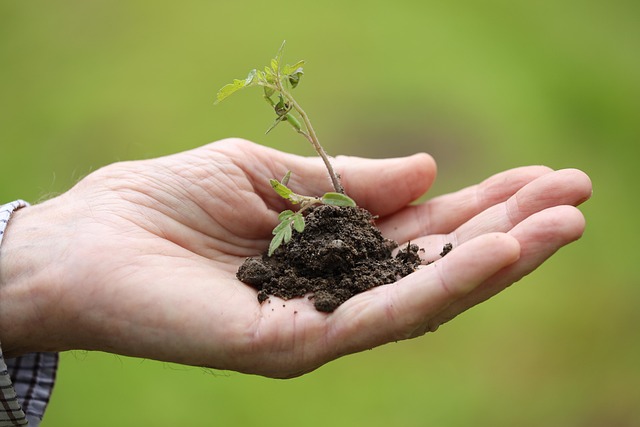Fall Garden Prep: What to Do in August and September
Get your garden ready for the cooler months! Learn essential August and September tasks for a bountiful harvest and a healthy spring.
Table of Contents
Introduction
August and September mark a crucial transition period for gardeners. Fall garden prep isn't just about tidying up; it's about setting the stage for a vibrant garden next spring. This period allows us to prepare the soil, plant cool-season crops, and protect existing plants from the impending colder temperatures. By following a few key steps, you can ensure your garden thrives even as the days grow shorter and the weather turns cooler. Proper fall garden prep is key to a successful gardening year.
Soil Improvement
Healthy soil is the foundation of a thriving garden. As you harvest summer crops, consider adding compost or well-rotted manure to replenish nutrients depleted during the growing season. This amendment improves soil structure, drainage, and fertility, making it ideal for planting fall crops. The University of Minnesota Extension recommends incorporating organic matter to increase soil health and water retention. Don't just spread it on top; till it in gently to about 6 inches deep to allow for proper incorporation.
Testing your soil is also a great investment. A soil test will reveal nutrient deficiencies or imbalances that you can then address through targeted amendments. This allows for a more precise approach, maximizing the effectiveness of your soil enrichment efforts. Knowing your soil pH is also critical to the success of your fall plantings, as some plants prefer acidic or alkaline conditions.
Furthermore, consider a cover crop like winter rye or clover. Planted now, these crops will protect your soil over the winter, preventing erosion and adding more organic matter come spring. They also suppress weeds, reducing your workload next year.
- Composting: Add compost or manure to enrich the soil.
- Soil Testing: Identify nutrient deficiencies and pH levels.
- Cover Cropping: Plant winter rye or clover to protect and improve the soil.
Fall Planting
Fall is an ideal time for planting many vegetables and flowers that thrive in cooler temperatures. Think cool-season crops like lettuce, spinach, kale, and other hardy greens. These plants will appreciate the cooler weather and provide a fresh harvest throughout the autumn. Certain root vegetables like carrots, turnips, and radishes also do extremely well planted in fall.
Don't forget about bulbs! Plant your daffodils, tulips, and hyacinths in August or early September to enjoy a vibrant spring display. Consider the spacing and planting depth recommended on the packaging, or follow gardening guides to ensure optimal results.
Selecting the right varieties is crucial. Choose varieties known for their cold hardiness, ensuring they can withstand potential frosts. Local garden centers are a great resource for advice on suitable varieties for your specific climate.
Harvesting Summer Crops
Before focusing on fall planting, make sure to harvest any remaining summer crops. This includes tomatoes, peppers, zucchini, beans, and other summer vegetables. Harvesting promptly prevents overripe produce and allows you to enjoy the peak flavor of your summer bounty. Don't leave ripe vegetables on the vine to rot – they can spread disease.
Proper harvesting techniques also matter. For example, with tomatoes, it is best to gently twist them off rather than yanking at the stem.
Protecting Plants from Frost
As temperatures begin to drop, protect tender plants from frost. This could involve covering them with blankets, row covers, or even bringing potted plants indoors. Monitoring the forecast is key; you don't want to be caught off guard by an unexpected early frost.
Cleaning and Clearing the Garden
Remove any diseased or dead plant material from the garden. This helps prevent the spread of diseases and pests to next year's crops. Dispose of the plant matter properly, preferably by composting if it isn't diseased. This reduces the risk of pest overwintering in your garden.
- Disease Prevention: Remove and dispose of diseased plants properly.
- Pest Control: Clear away debris that may harbor pests.
- Composting: Compost healthy plant material.
Preparing for Winter Vegetables
If you're planning on growing winter vegetables like kale, Brussels sprouts, or cabbage, ensure they have adequate spacing and support. These crops can grow quite large and need room to develop properly.
Watering Strategies for Fall
Adjust your watering schedule as the weather cools. Overwatering can lead to root rot in cooler, wetter conditions. Water deeply but less frequently, allowing the soil to dry slightly between waterings.
Pest and Disease Management
Inspect your plants for pests and diseases. Take appropriate measures to control any infestations or infections. Many garden centers offer organic pest control solutions. Early detection is key to effective pest management.
Conclusion
Fall garden prep in August and September is an investment in a successful gardening year ahead. By taking these steps, you are not only cleaning up your garden, but setting the stage for a flourishing spring. Remember that proper soil preparation, timely planting of cool-season crops, and protective measures against frost are all crucial components of successful fall garden prep. Happy gardening!
FAQs
When should I plant my fall bulbs?
Generally, you should plant fall bulbs in August or September, before the ground freezes.
What are some good fall cover crops?
Winter rye and clover are excellent choices for fall cover crops.
How often should I water my garden in the fall?
Water deeply but less frequently than in summer, allowing the soil to dry slightly between waterings.
What should I do with diseased plants?
Remove and dispose of diseased plants promptly to prevent the spread of disease. Do not compost diseased material.
What vegetables can I plant in the fall?
Good choices include lettuce, spinach, kale, radishes, turnips, and carrots.
